The winter rye is tall and surrounds and shades my berry plants.
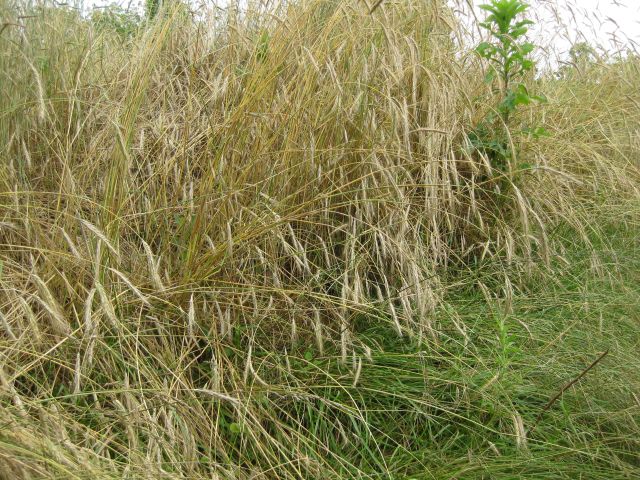
Now it is summer the winter rye is drying out and will soon drop its seed. I like the wilderness of this luscious growth and see no point in cutting it down, except where it dwarfs my plantings. It is shallow rooted and after a rain comes easily out of the ground, but that leaves an open spot quickly invaded by weeds and Bermuda grass. For clearing the rye away from my plantings my large scythe is ill suited since it requires large two handed sweeps which can easily slice off the unintended. I remembered the one hand sickle from my childhood days, googled it and found several variations for sale. I wanted something solid and not with a serrated blade. The Truper 33576 grass hook (as it is called) with a riveted handle best suited my requirements and cost $18.11 on the internet. It arrived with a slight bevel on the blade but completely blunt, as is customary. I have a peening jig mounted on a broad oak log.
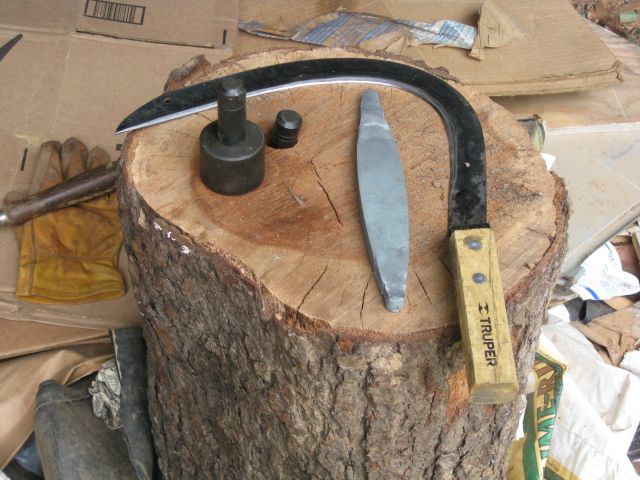
The peening procedure is fairly simple – you place the blade between the anvil and the cap and then you tap the #1 cap along the length of the blade and then the #2 cap. Peening flattens and expands the blade making it thinner for better sharpening.
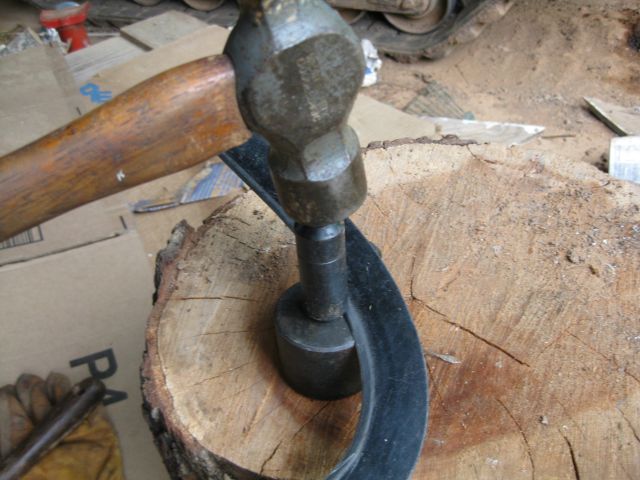
I then hand sharpened the blade with the stone. Which was not a good idea since it took an inordinate time. So, instead I fitted a small grinding wheel on my dremel and this sped things up.
I am very happy with the hand sickle. Cutting grass is simple but needs care. With one hand you grasp the tall grass and pull it taut. You place the sickle blade at the base of the grass and with a slicing motion you sever the grass. Since some force is exerted pulling the sickle toward you and it can come quickly swinging clear, you should keep limbs well out of the way of its path. Also take care not to slice the hand holding the grass. You can fold the grass in half (if it is several feet long) and use it to border the planting. This acts as a mulch, keeps the ground moist and dissuades weeds. A weed whacker would work but it flings the grass about and could damage the plantings. The sickle is very precise since you encircle the grass to be cut with the hook before cutting it. And since you now have the cut grass in your hand it is easy to place it where you wish.
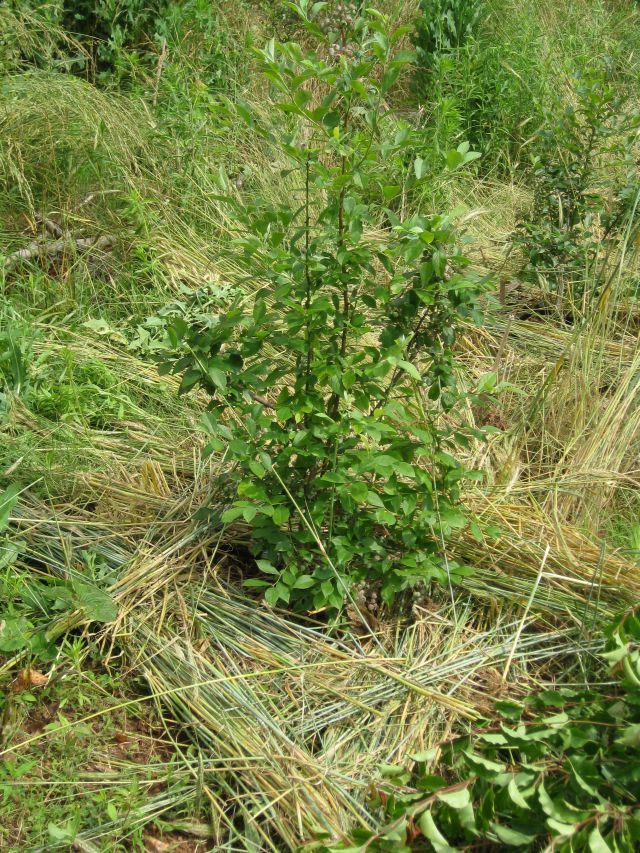
And here is a row of raspberry and blackberry plantings liberated from the rye which concealed them.
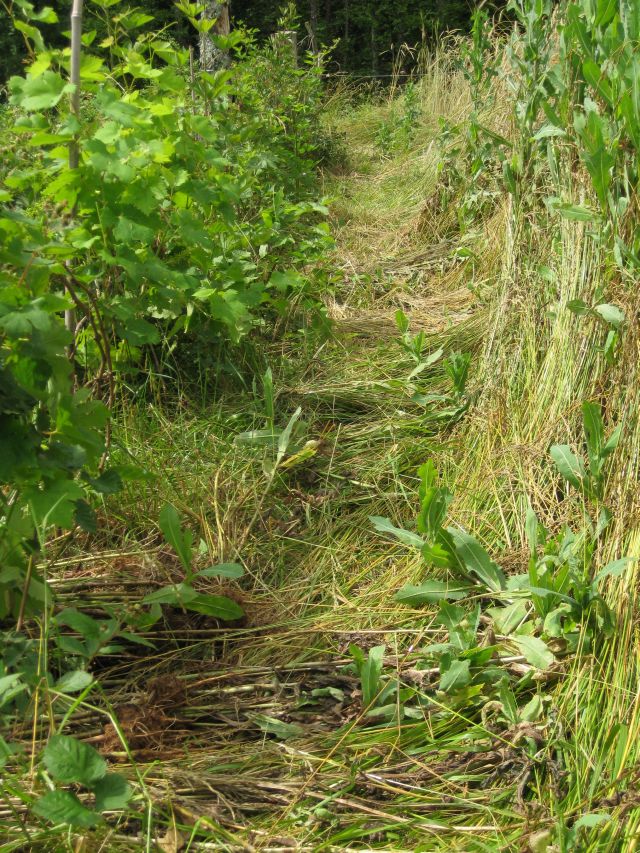

Thank you for sharing this. I have also found TRUPER grass sickle useful leaving a nicely cut grass. The most valuable part for me is the detailed description of the peening process: I know we should peen (“mángorol” in my language) tools rather than sharpen with stone that erodes the tool’s material but we do not have special peening jig in my country.
Thank you for your comments. The peening jig is helpful to me since I do not have the skill to accurately thin the blade with a hammer and anvil.